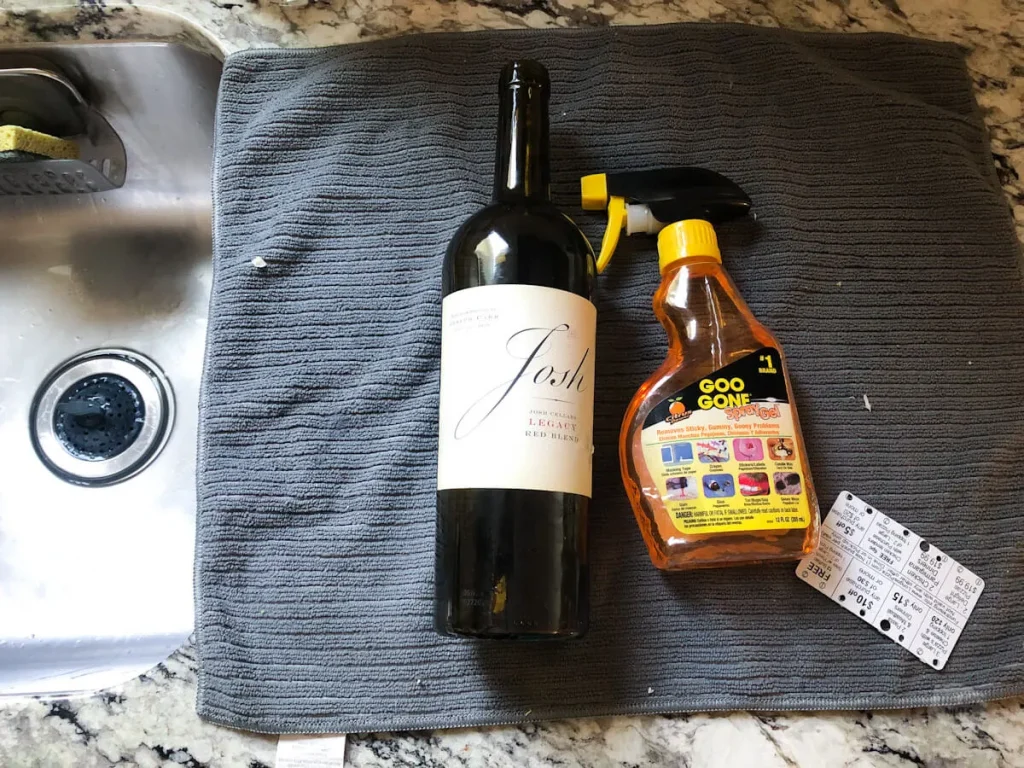Well, One of the best parts about being an organization freak is slowly and perfectly removing the sticker or label off of your books, furniture, or any other material. Ah, the satisfaction, isn’t it?
Yet many things do go wrong while removing stickers, for example, the half-torn, misshapen-shaped structure that lies as sticker residue after your 100th attempt at trying to make sure it is perfectly removed! It calls for an all-time emergency, doesn’t it?
Leaving behind torn stickers and parts of sticker residue makes you look unprofessional and clumsy, and the sheer frustration and dissatisfaction get to you after a point! Don’t worry; we’re all set to be your 911 for clumsy emergencies!
Here’s a cumulative list of 7 easy and accessible ways to remove sticker residue!
1. Mechanical Scrapers
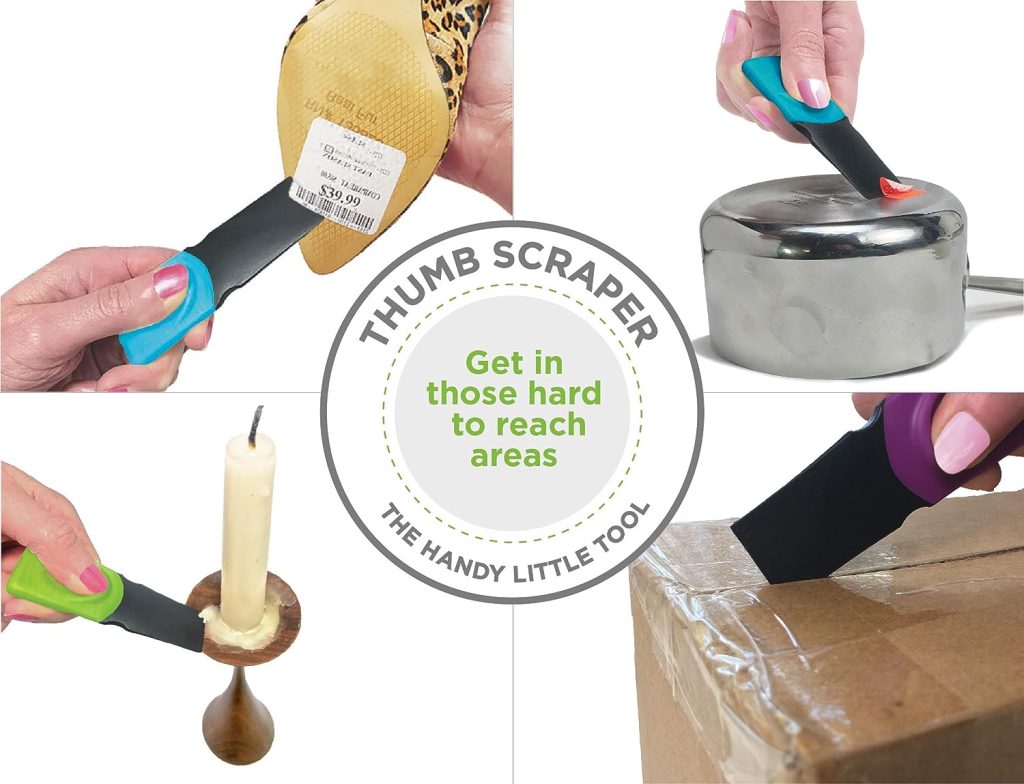
Your first go-to option can be scrapers. There are a variety of scrapers that will be effective on different surfaces. Hence, plastic and mechanical scrapers can be the most effective.
To start off, if you don’t have access to any professional scraping tools or you don’t have enough time to run to the shop or get some, some quick and easy ways to scrape can be a plastic credit card, an ID card, gift cards, or the scratchy sides of sponges. Yet, if you have the chance to wait or want to pre-plan, there are a wide variety of plastic scrapers, like plastic blades and some easily accessible thumb scrapers. This will work effectively on materials that aren’t prone to scratches or lasting effects, like cloth materials, plastics, and glass. Yet, these might not always be effective as they aren’t strong enough for other materials or strongly attached residues.
To handle stubborn sticker residues, you can go for metal scrapers, plastic blades, or paint scrapers. This works well on surfaces that are hard, like wood or glass. If you opt for the same, you can go ahead with plastic blade scraper knives, razor blade scrapers, or an all-purpose scraper. Yet, try to be extremely careful while using these to make sure you’re safe, and so is the surface!
2. Liquid Remedies: Soapy Water, White Vinegar, and Oil
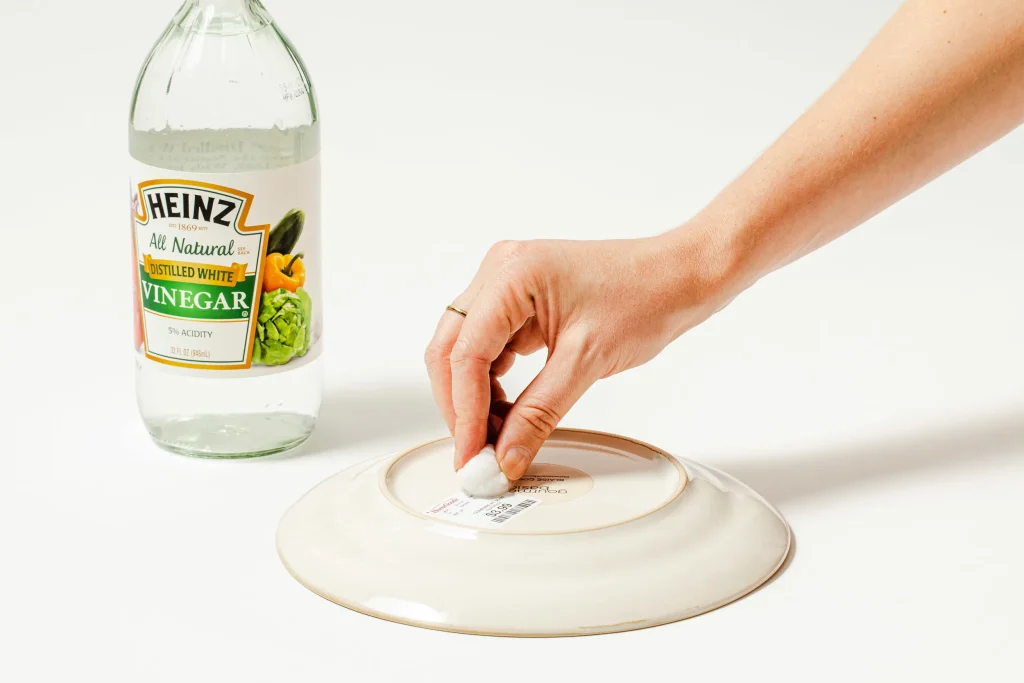
Now, all scrapers might not be effective, depending on the material, or if you don’t have the time to get the scrapers, you can go the chemical way with materials you can easily find at home. The material of the residue can be dry and sticky; hence, loosening it up can be very effective.
The easiest and most efficient way is with water, hot water, or soapy water. Using cold water cannot be effective as it won’t remove the residue, but hot water will help you soften the residue. Waiting for a few minutes will help you soften the sticker residue, and then you can remove them either with a plastic scraper or with your fingernails. This technique can be used with soapy water as well. Hence, adding splashes of dishwashing soap will do the trick quicker and will require just a little bit of effort and a washcloth. You can either submerge the object (if possible) into the water, drop some liquid on the residue, or soak a washcloth in liquid and use it to wipe the residue away.
If the water doesn’t satisfy its purpose or the residue is on a sensitive surface, then using vegetables, cooking, coconut, or olive oil can work effectively. Dropping the oil on the residue and letting it sit for anywhere between 30 minutes and 1-2 hours can be your go-to action. After letting it sit, you can use a clean rag and try to wipe away the sticker residues, or you can scrape it with your fingernails. One major thing to remember is not to use these residues on a porous surface, and make sure you use them only on glass, metal, plastic, or steel. If you don’t want to stay through the waiting time, you can make a paste of baking soda or powder and then apply the paste to the surface.
Another idea is to use vinegar around the house if you don’t have any other things around. You can use a rag or cloth to soak in the vinegar, place it around the residue, and wait for 15 minutes. After that, you can easily remove the residue with the washcloth. You can use vinegar on any non-porous surface except marble, stone, or aluminum.
3. Rubbing Alcohol and Acetone
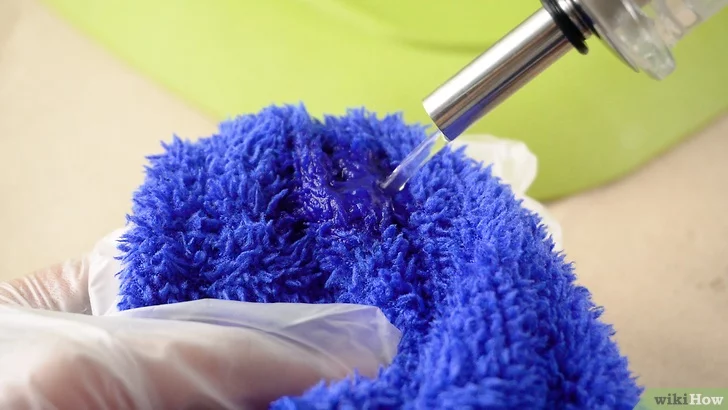
One of the safest, most widely effective, and fastest ways of handling residues are rubbing alcohol, vodka, and acetone. For surfaces like wood, glass, or plastic, you can use a rag, cloth, or sponge and soak them in alcohol and let them rest on the residue for 10-15 mins and instantly wipe them off. Rubbing alcohol is the most effective as it is easier to dry off without any side effects and leaves no residue behind. If you can’t access rubbing alcohol, you can use acetone, nail polish remover, or flavored alcohol. If you’re using these materials on clothes or fabric, then using cotton pads or cotton balls will be easy and effective.
4. WD-40
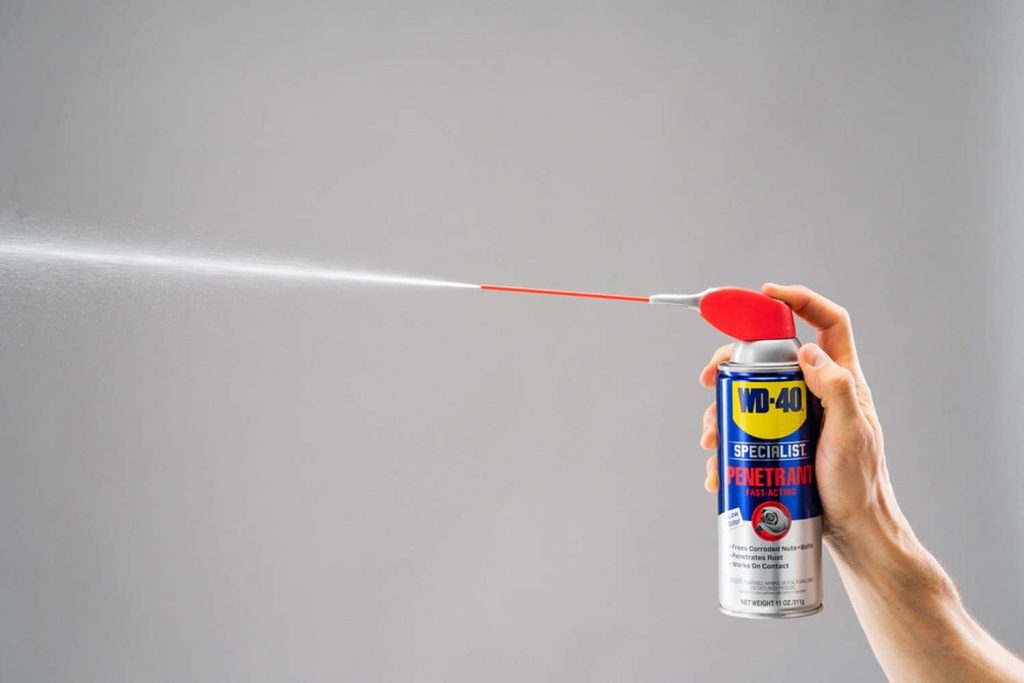
One of the most widely applicable and accessible tools for scraping is WD-40. It is a spray that can be widely used across different materials and for different applications. One spray and wiping the surface are the most simple and applicable ways. The only products not to use this spray on are clothing materials.
But let us tell you that your first option when dealing with a sticker or label residue should be to try and remove them without any cleaners, dryers, or scrapers. This way, you can make sure that you don’t harm, ruin, or fade the material or object. Another major thing you want to avoid is using knives or blades, thereby removing or reducing the possibility of ruining the surface.
5. Commercial Cleaners
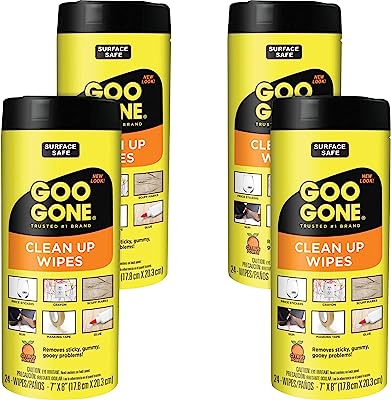
Another professional and easiest way to handle residues is with commercial cleaners designed specifically for this purpose. The task is a 2-step process to spray and swipe. Cleaners like goo-gone or other citrus cleaners are the most widely used commercial cleaners. They provide a nice and refreshing odor (citrus cleaners) and also effectively wipe off all residue left after the paper bits.
Yet there are chances that there can be oily residues; hence, wipe the surface with soapy water and a washcloth. This easy method is effective on almost all surfaces, but you have to be careful on surfaces like clothes or upholstery to make sure you don’t add on to the stains and can effectively help in only removing them.
6. Hairdryer
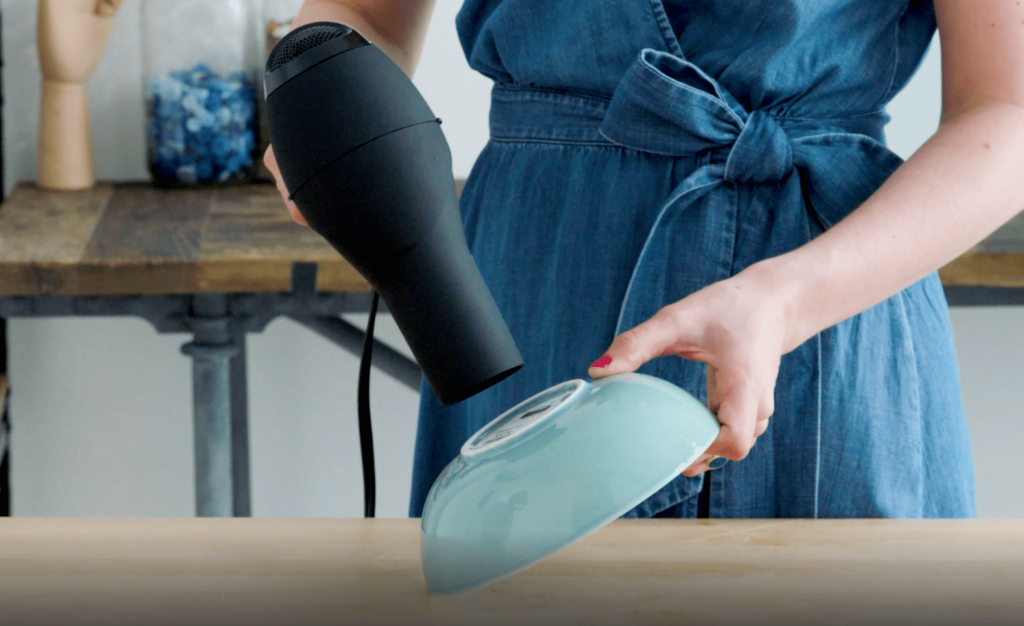
Another way to dry off your adhesive, labels, or stickers is to use hairdryers. Adhesive stickers mostly have viscoelasticity that makes them this sticky and hence won’t come off, at times with all other methods but using heat as the source of loosening up the molecules that are tightly bound always helps. This technique works wonders on almost all large surfaces.
Use its highest setting, and the heat can be used to melt off any stickers. If needed, wipe them off with a washcloth or scrape them off with a scraper. This way, you can make sure that stickers don’t just stay messy or even in patches and hence are all wiped up clean. This also works wonders on wooden and metal surfaces. But it might not work out well when you expose this to plastic surfaces because some plastic materials are more prone to melt by heat, even if it is from a hairdryer.
Even if it doesn’t melt, it will either mold or scrunch up hence damaging itself. Also, make sure you’re being careful using it over metals to make sure you don’t keep it on for a long time and make the metal surface hot to the touch.
7. Go Wild, Go Home
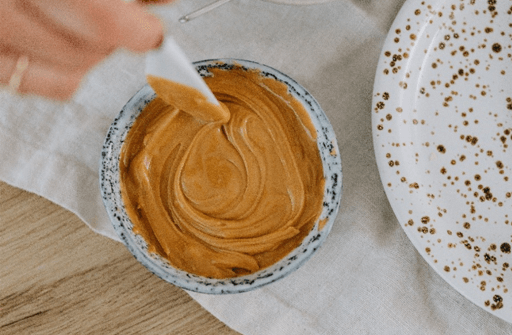
A very unique yet easily accessible way is to use household items like peanut butter, mayonnaise, and masking tape. You can use masking tape by rolling the tape on your fingers and then pressing the tape on the residue and keeping pulling until it goes away.
Using mayonnaise and peanut butter can seem like an unlikely choice, yet it is very effective. This can loosen up the sticker residue. This can add oil to non-porous surfaces, and then after setting up the products on the surface, you can wipe them off easily with the washcloth. But be careful about the surfaces you are using these on, as they can add to the trouble as fast as they can aid in removing it.
Applying them to upholstery or clothing materials can be a disaster. They can remove the sticker residue but add more to the stains, which will take its own sweet time and process to remove. Also, some sensitive materials can react to vinegar which can also leave a lasting smell.
Final Thoughts
Hence, this list of tricks and tips can be effective when your fingers don’t do the needful. Always make sure that your first response to stickers and their residues is just sorting, taking them off, and using your fingers as there are chances of side-effects of other methods, which you can take care of but will require more effort and time and hence trying natural ones, in the beginning, will help minimize the probable effects or damage.
The most important thing to focus on is keeping in mind the material or surface that you will sticker or label. Many of these tricks work wonders on the surfaces they are compatible with, but they can add a lot of side effects or leave more residue than is already present when added to non-compatible surfaces. We hope that these tips help you get the final satisfaction of a clean and smooth surface! Hence! Get Set and Go!

